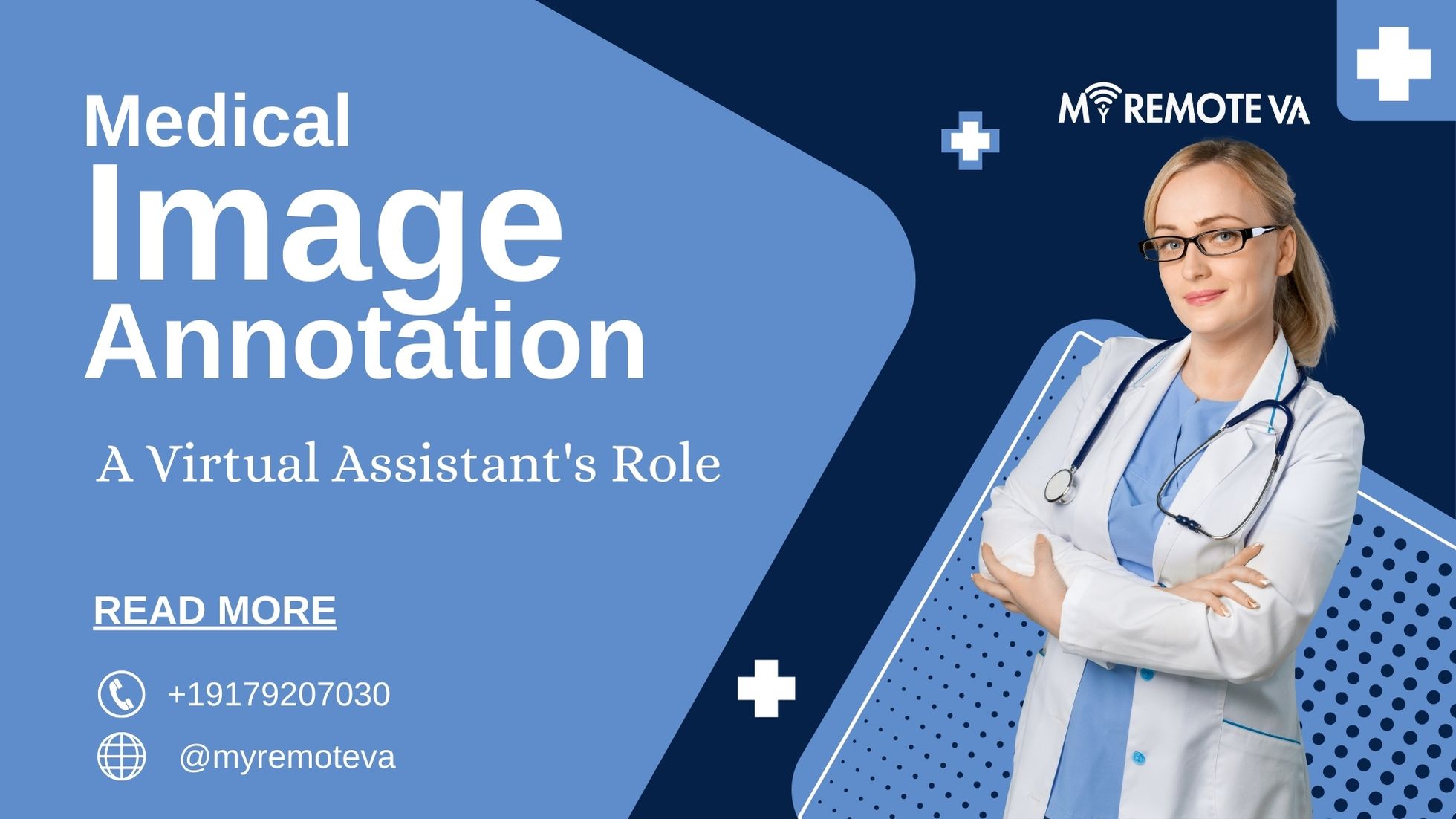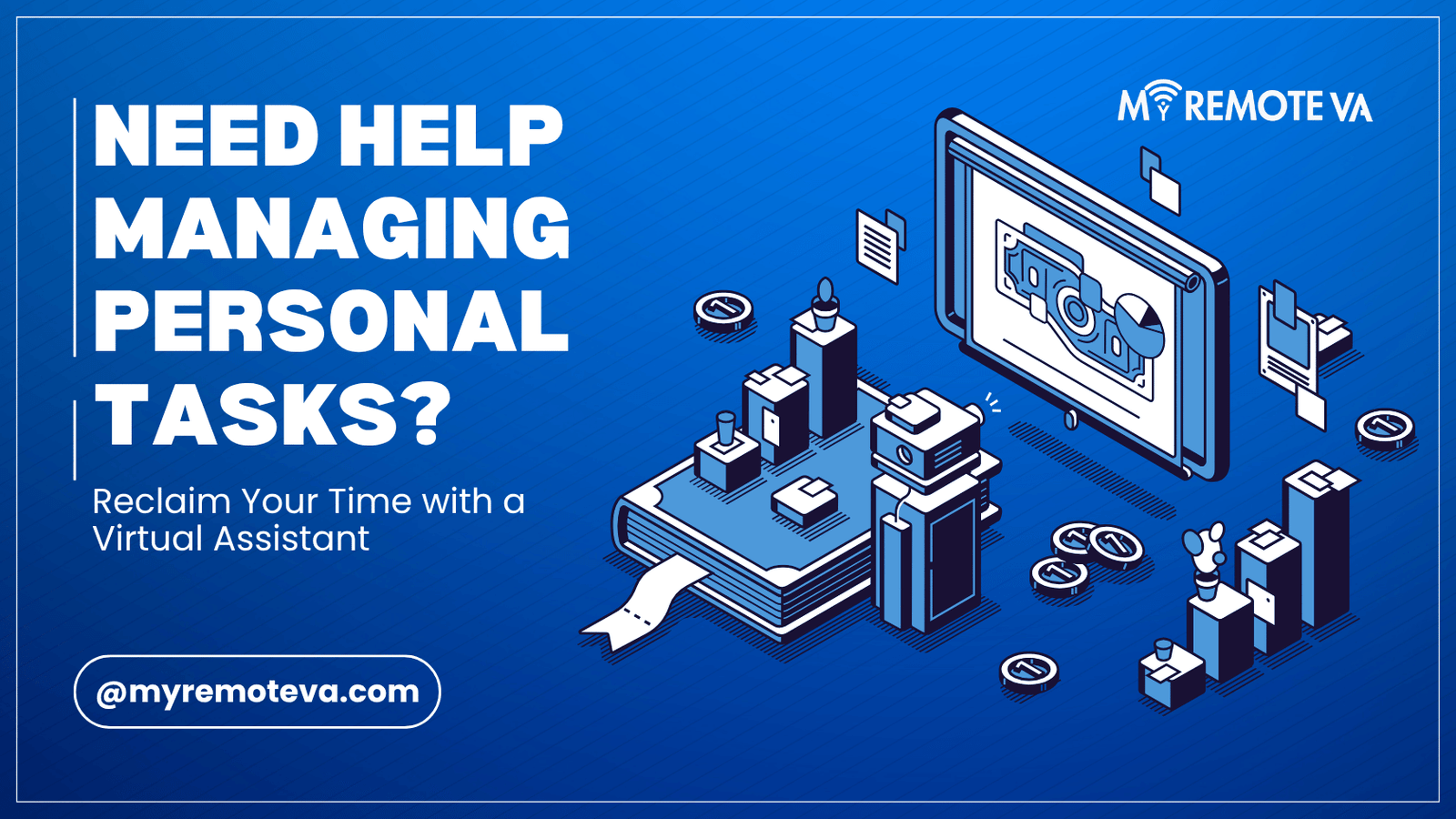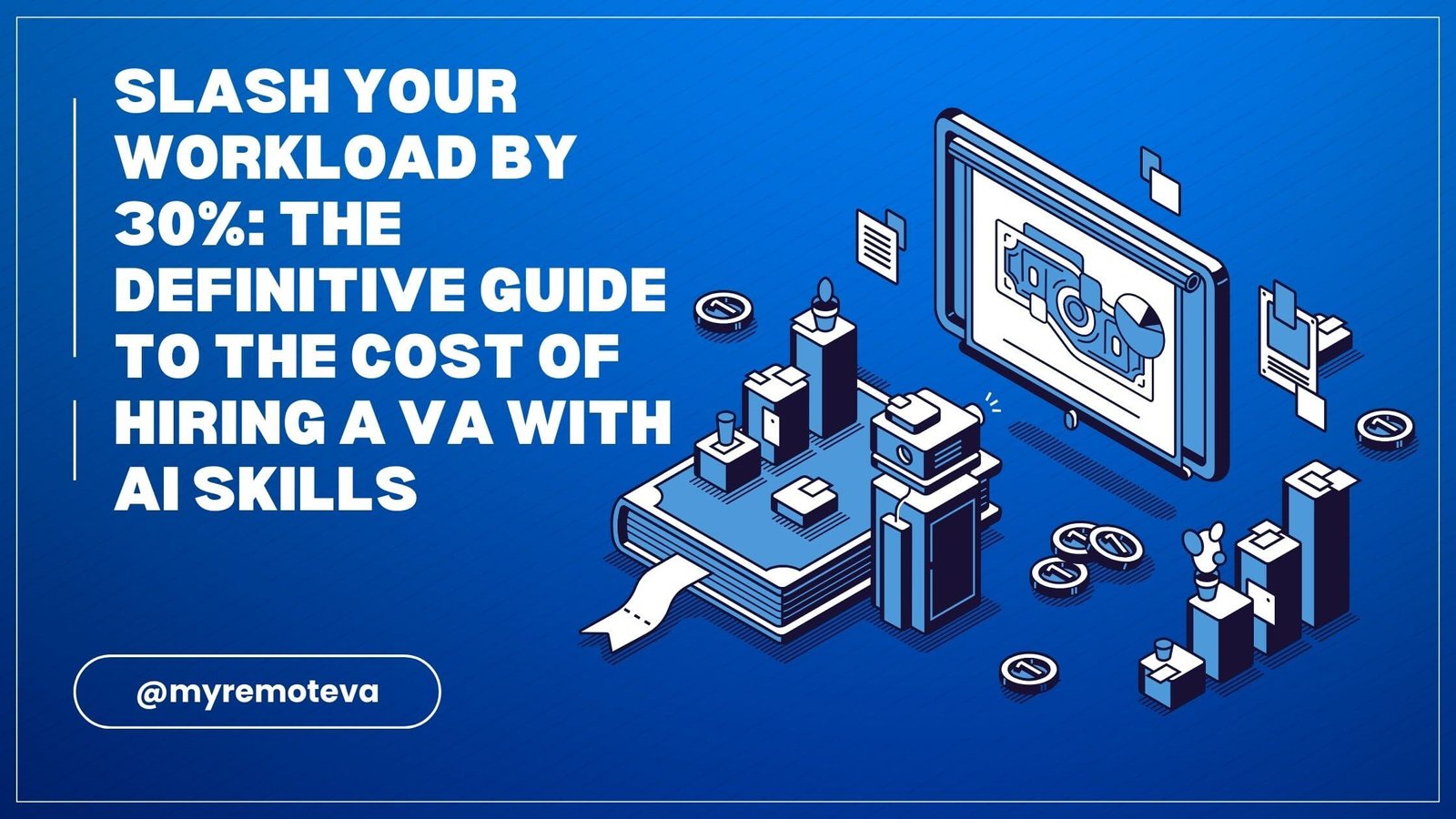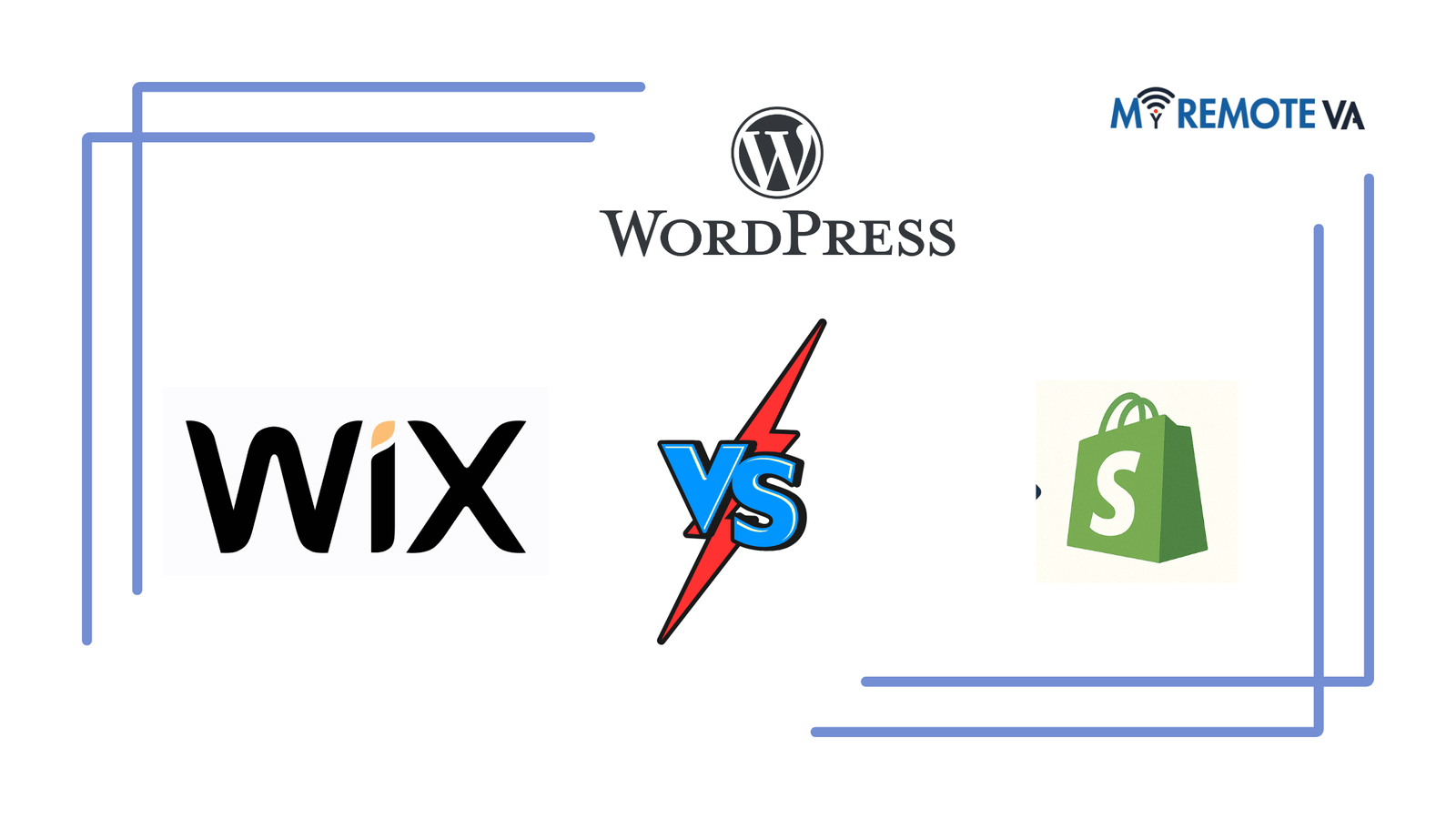Medical Image Annotation: A Virtual Assistant’s Role
Medical image annotation is a crucial process in training artificial intelligence (AI) models for medical image analysis. It involves carefully labeling medical images, such as X-rays, CT scans, and MRIs, to highlight specific features of interest, like tumors, fractures, or anatomical structures. This labeled data then serves as the foundation for AI algorithms to learn and accurately identify these features in new, unseen images. The accuracy and efficiency of medical image annotation directly impact the reliability and effectiveness of AI-powered diagnostic tools.
- Medical Image Annotation: A Virtual Assistant's Role
- Introduction to Medical Image Annotation
- Challenges in Medical Image Annotation
- How Virtual Assistants Can Streamline Medical Image Annotation
- Benefits of Using Virtual Assistants for Medical Image Annotation
- Market Signals & Recent Trends (USA, UK, New Zealand, Singapore, Australia, UAE - Last Month)
- Choosing the Right Virtual Assistant Solution for Medical Image Annotation
- Case Studies and Examples: Medical Image Annotation in Action
- Future Trends in Medical Image Annotation and Virtual Assistants
- Frequently Asked Questions (FAQ) about Medical Image Annotation
- What is the Cost of Using a Virtual Assistant for Medical Image Annotation?
- How do I ensure the accuracy and quality of annotations performed by a virtual assistant?
- Is it Safe to Share Sensitive Medical Images with a Virtual Assistant for Medical Image Annotation?
- What Type of Medical Images Can Be Annotated Using a Virtual Assistant?
- What Skills Are Required to Be a Medical Image Annotator?
- How Can I Get Started with Using a Virtual Assistant for Medical Image Annotation?
However, medical image annotation can be a time-consuming and labor-intensive task, requiring specialized knowledge and expertise. This is where a virtual assistant (VA) can play a vital role. Delegating annotation tasks to a trained VA can significantly reduce the burden on medical professionals and accelerate the development of AI solutions.
How a Virtual Assistant Supports Medical Image Annotation
A virtual assistant can provide valuable support in various aspects of medical image annotation, contributing to increased efficiency and accuracy:
- Data Preparation and Organization: VAs can assist in organizing and preparing medical image datasets, ensuring consistency and adherence to specific annotation guidelines. This includes tasks such as image sorting, file format conversion, and data anonymization to protect patient privacy .
- Annotation Tool Management: VAs can become proficient in using various medical image annotation software tools, streamlining the annotation process and ensuring accurate labeling.
- Basic Annotation Tasks: With proper training and supervision, VAs can perform basic annotation tasks, such as outlining anatomical structures or identifying regions of interest based on pre-defined criteria.
- Quality Control and Review: VAs can assist in quality control by reviewing annotations for accuracy and consistency, ensuring that the labeled data meets the required standards.
- Communication and Coordination: VAs can facilitate communication and coordination between annotators, radiologists, and AI developers, ensuring a smooth and collaborative annotation workflow.
Benefits of Using a Virtual Assistant for Medical Image Annotation
Leveraging a virtual assistant for medical image annotation offers several key advantages:
- Cost-Effectiveness: Hiring a VA can be more cost-effective than employing dedicated in-house annotation specialists.
- Increased Efficiency: By delegating annotation tasks, medical professionals can focus on their core responsibilities, leading to increased overall efficiency.
- Scalability: VAs provide flexibility to scale annotation efforts up or down based on project needs.
- Reduced Turnaround Time: VAs can work on annotation tasks around the clock, reducing the time required to prepare datasets for AI training.
Choosing the Right Virtual Assistant Service
When selecting a VA service for medical image annotation, consider factors such as the VA’s experience with medical terminology, familiarity with annotation tools, and understanding of data privacy regulations. Some services, like those offering dedicated supervisors and structured plans, may be particularly well-suited for managing complex annotation projects and ensuring high-quality results. These services often offer curated hourly monthly plans or dedicated plans, allowing for flexible access to VA support depending on the project’s requirements. It’s also important to consider the availability of ongoing training and support for the VA to ensure continuous improvement in their annotation skills.
Introduction to Medical Image Annotation
Medical image annotation is the process of adding labels, markings, and descriptions to medical images, such as X-rays, CT scans, MRIs, and ultrasounds. This crucial process transforms raw medical images into valuable datasets that can be used to train and evaluate artificial intelligence (AI) and machine learning (ML) models. These models are then deployed for a variety of applications, including disease detection, diagnosis, treatment planning, and research.
The accuracy and reliability of these AI/ML models heavily depend on the quality of the annotations. Therefore, meticulous and precise annotation by trained experts is paramount. Inaccurate or inconsistent annotations can lead to flawed models, potentially resulting in misdiagnoses or ineffective treatments.
Why is Medical Image Annotation Important?
Medical image annotation plays a pivotal role in advancing healthcare in the digital age. Here’s why it’s so important:
- AI Model Training: Annotated images provide the “ground truth” data needed to train AI algorithms. The more high-quality, accurately labeled data available, the better the AI model will perform at identifying patterns and anomalies in medical images.
- Improved Diagnostic Accuracy: AI models trained on annotated images can assist radiologists and other medical professionals in detecting diseases earlier and more accurately. This can lead to faster diagnosis and treatment, ultimately improving patient outcomes.
- Personalized Medicine: Image annotation facilitates the development of AI models that can tailor treatment plans to individual patients. By analyzing medical images and identifying specific characteristics of a disease, these models can help doctors choose the most effective treatment options.
- Accelerated Research: Annotated datasets accelerate medical research by providing researchers with a readily available source of labeled data. This allows them to quickly develop and test new diagnostic and therapeutic techniques.
- Enhanced Efficiency: AI-powered tools trained on annotated medical images can automate certain tasks, such as image segmentation and lesion detection, freeing up clinicians to focus on more complex cases.
The Annotation Process
The medical image annotation process typically involves the following steps:
- Image Acquisition: Medical images are acquired using various modalities, such as X-ray, CT, MRI, or ultrasound.
- Annotation Planning: Define the specific features or structures that need to be annotated based on the research question or clinical application.
- Annotation Execution: Trained annotators, often radiologists or other medical experts, use specialized software to draw boundaries around anatomical structures, identify lesions, or mark specific features of interest.
- Quality Control: The annotations are reviewed by experienced professionals to ensure accuracy and consistency. Discrepancies are resolved through consensus.
- Data Management: The annotated images and associated metadata are stored in a secure and organized database.
The complexity and time required for medical image annotation can vary depending on the image modality, the anatomical structures being annotated, and the level of detail required. Therefore, many organizations are turning to expert virtual assistant support to help manage the annotation process efficiently and effectively. This can include tasks like data preparation, basic annotation tasks (under the guidance of medical professionals), and quality control checks, freeing up clinicians to focus on their core expertise.
Challenges in Medical Image Annotation
Medical image annotation, a cornerstone of AI-powered diagnostics and research, presents a unique set of challenges due to the complexities inherent in medical data and the criticality of accuracy. Achieving high-quality annotations requires navigating a landscape of specialized knowledge, technical hurdles, and stringent quality control measures.
Expertise and Domain Knowledge
Unlike annotating everyday images, medical image annotation demands a deep understanding of anatomy, pathology, and imaging modalities. Annotators must be able to accurately identify and delineate subtle features, differentiate between normal and abnormal structures, and correctly classify various disease states. This necessitates specialized training and experience, often requiring collaboration with radiologists, pathologists, and other medical professionals.
Data Variability and Complexity
Medical images exhibit significant variability arising from differences in patient anatomy, imaging protocols, scanner types, and image quality. Furthermore, the complexity of medical images, often containing overlapping structures and subtle anomalies, makes accurate annotation a difficult task. For instance, variations in patient positioning during MRI scans or differences in contrast enhancement during CT scans can significantly affect the appearance of anatomical structures . This complexity requires robust annotation methodologies and meticulous attention to detail.
Subjectivity and Inter-Observer Variability
Inter-observer variability, or differences in annotations among experts, is a well-documented challenge in medical image annotation. Subjectivity in interpreting image features and variations in individual annotator experience can lead to inconsistencies. Mitigating this variability requires clear annotation guidelines, standardized protocols, and rigorous quality control measures, including consensus building among multiple annotators.
Data Privacy and Security
Medical images contain sensitive patient information, making data privacy and security paramount. Annotation workflows must adhere to stringent regulations like HIPAA (Health Insurance Portability and Accountability Act) to protect patient confidentiality. Secure data storage, access controls, and anonymization techniques are crucial to ensure compliance and maintain patient trust.
Scalability and Efficiency
Annotating large volumes of medical images is a time-consuming and resource-intensive process. As the demand for AI-powered solutions in healthcare grows, the need for scalable and efficient annotation workflows becomes increasingly critical. Optimizing annotation pipelines, leveraging automation tools, and employing strategies like active learning can help accelerate the annotation process without compromising accuracy.
Overcoming these challenges requires a multi-faceted approach, including investing in expert training, implementing robust quality control mechanisms, and leveraging technology to improve efficiency. For startups, founders, agencies, and busy professionals navigating the complexities of medical image annotation, expert virtual assistant support can provide valuable assistance. Dedicated VAs can manage annotation projects, ensure data quality, and streamline workflows, freeing up valuable time and resources to focus on core business objectives.
How Virtual Assistants Can Streamline Medical Image Annotation
Medical image annotation is a crucial yet time-consuming process in healthcare. Accurately labeling medical images like X-rays, MRIs, and CT scans is essential for training AI algorithms used in diagnostics, treatment planning, and research. However, this process often involves highly skilled professionals, leading to bottlenecks and increased costs. Virtual assistants can significantly streamline medical image annotation, addressing these challenges and boosting efficiency.
Reduced Costs and Improved Efficiency
One of the primary benefits of using virtual assistants for medical image annotation is cost reduction. Hiring and training in-house annotators can be expensive. Virtual assistants, particularly those specializing in medical image annotation, offer a flexible and cost-effective alternative. They can handle repetitive tasks, allowing highly specialized radiologists and clinicians to focus on more complex cases requiring their expertise.
By delegating annotation tasks to virtual assistants, healthcare providers can free up valuable time and resources. This improved efficiency leads to faster turnaround times for image analysis and quicker insights for patient care. For instance, studies have shown that outsourcing repetitive tasks can improve productivity by up to 30% .
Access to a Skilled and Trained Workforce
Virtual assistant services provide access to a pool of skilled professionals often trained in medical terminology and annotation protocols. They understand the nuances of different imaging modalities and the importance of accurate labeling. With the right onboarding and ongoing training, virtual assistants can consistently deliver high-quality annotation work, ensuring the reliability of AI models.
Scalability and Flexibility
The volume of medical images requiring annotation can fluctuate significantly. Virtual assistants offer the scalability and flexibility to adapt to these changing demands. Whether you need to annotate a large batch of images for a research project or maintain a consistent flow of annotations for clinical use, virtual assistants can scale up or down as needed, offering a tailored solution to meet your specific requirements. This allows healthcare organizations to better manage their workload and avoid the challenges of hiring and managing temporary staff.
Improved Data Quality and Consistency
Dedicated virtual assistant services often implement quality control measures to ensure data accuracy and consistency. This includes standardized annotation guidelines, regular audits, and feedback mechanisms to identify and correct errors. Consistent annotation practices are essential for training reliable AI models and ensuring accurate diagnoses.
You can delegate tasks that include admin, data entry, customer support, marketing, creative tasks, or even executive-level work to a virtual assistant. A dedicated supervisor can also manage the virtual assistant, shifts, processes, and reporting. Available are curated Hourly Monthly Plans or build a team with Dedicated Plans, or even multi-VA setups. It’s possible to start with a free plan offering a free hour every month with support and rollover benefits.
Benefits of Using Virtual Assistants for Medical Image Annotation
Medical image annotation is a crucial, yet often time-consuming and resource-intensive process in the development of AI-powered diagnostic tools. Leveraging virtual assistants (VAs) can offer significant advantages, streamlining the annotation workflow and improving overall efficiency.
Reduced Costs and Increased Efficiency
Outsourcing medical image annotation tasks to virtual assistants can substantially reduce operational costs. By delegating this specialized work, healthcare organizations can avoid the expenses associated with hiring and training in-house annotators, including salaries, benefits, and specialized equipment. VAs, especially those trained in medical image annotation, can quickly and accurately complete tasks, freeing up highly skilled radiologists and physicians to focus on more complex diagnostic work. This translates to faster turnaround times for annotations and faster progress in AI model development.
Improved Annotation Quality
While automation plays a role, the human element remains essential for accurate medical image annotation. Well-trained virtual assistants can provide consistent and reliable annotations, particularly when they have access to appropriate training materials and quality assurance protocols. Dedicated Supervisor oversight, including quality checks and feedback loops, further enhances annotation accuracy. This is crucial for developing robust and reliable AI algorithms that can accurately interpret medical images.
Scalability and Flexibility
The demand for medical image annotation can fluctuate significantly depending on project needs. Using virtual assistants offers unparalleled scalability. Organizations can easily adjust the number of VAs assigned to a project based on current requirements, scaling up or down as needed. Flexible hourly and team-based plans can be tailored to specific project durations and workloads, ensuring optimal resource allocation without the long-term commitments associated with traditional hiring.
Focus on Core Competencies
By delegating time-consuming annotation tasks, healthcare professionals and researchers can dedicate more time to their core competencies, such as clinical research, patient care, and AI model development. This strategic allocation of resources fosters innovation and accelerates the development of cutting-edge diagnostic tools.
Market Signals & Recent Trends (USA, UK, New Zealand, Singapore, Australia, UAE – Last Month)
The market for medical image annotation is experiencing robust growth across the USA, UK, New Zealand, Singapore, Australia, and the UAE. This surge is driven by the increasing adoption of AI and machine learning in healthcare, which heavily relies on accurately annotated medical images for training and validation.
Key Observations:
- Increased Demand for Precision: There’s a growing emphasis on high-quality annotations. Medical professionals are increasingly seeking annotation services that guarantee accuracy to minimize errors in AI-driven diagnostics and treatment planning.
- Rise in Telemedicine and Remote Diagnostics: The expansion of telemedicine has fueled the need for remote medical image analysis, creating a higher demand for efficient and secure annotation workflows.
- Focus on Specialized Annotations: General annotation services are giving way to specialized expertise. For instance, precise segmentation of tumors in oncology or detailed analysis of cardiac MRI scans require annotators with specific medical knowledge.
- Regulatory Compliance: Data privacy regulations (e.g., GDPR, HIPAA) are shaping annotation practices. Compliance with these regulations is a critical factor when selecting an annotation service provider.
- Integration of AI Tools: The integration of AI-powered annotation tools is becoming more common, leading to faster turnaround times and improved efficiency. However, human oversight remains crucial to ensure accuracy.
Country-Specific Insights:
While the overall trend is positive, specific nuances exist in each region:
- USA: High investment in AI healthcare startups is driving demand for annotation services. A large number of clinical trials also necessitate precise data annotation.
- UK: The NHS is actively exploring AI solutions for diagnostics, leading to an increase in pilot projects requiring medical image annotation.
- Australia & New Zealand: The geographically dispersed population creates a strong need for telemedicine and remote diagnostics, boosting the demand for annotation services.
- Singapore: Singapore’s focus on becoming a regional healthcare hub is fostering the adoption of advanced medical technologies, including AI-powered diagnostics reliant on quality annotations.
- UAE: Significant investment in healthcare infrastructure and technology is creating opportunities for medical image annotation service providers.
How Virtual Assistants Can Help:
Meeting the demands of this evolving market requires agility and expertise. A virtual assistant can provide valuable support, streamlining annotation workflows and freeing up medical professionals to focus on their core competencies. For example, virtual assistants can assist with data pre-processing, quality assurance, and project management related to annotation projects. A Dedicated Supervisor can manage the VA, shifts, processes, and reporting. With curated Hourly Monthly Plans of (5, 10, 20, 30 hours) or build a team with Dedicated Plans, for 80 hours, or for 160 hours, or multi-VA setups you can quickly scale up or down your image annotation support based on project requirements.
Choosing the Right Virtual Assistant Solution for Medical Image Annotation
Medical image annotation is a highly specialized task demanding accuracy, consistency, and often, medical expertise. Selecting the right virtual assistant (VA) solution can significantly impact the quality of your annotations, the efficiency of your workflow, and the overall success of your project. The best approach depends heavily on your specific needs and resources.
Understanding Your Medical Image Annotation Needs
Before selecting a VA solution, clearly define your requirements. Consider the following:
* Annotation Type: What type of annotation is needed (e.g., bounding boxes, segmentation, landmarking)? The complexity influences the skill set required.* Image Modality: Is it X-ray, MRI, CT scan, ultrasound, or another modality? Familiarity with the modality is crucial.* Medical Domain: Which anatomical region or disease are you focused on (e.g., radiology, cardiology, oncology)? Specific domain knowledge is often necessary for accurate annotation.* Volume and Timeline: How many images need to be annotated, and what is the deadline? This will determine the scale of support you need.* Quality Control: How will annotation quality be ensured and validated? The VA solution should offer built-in quality assurance processes.
Evaluating Virtual Assistant Service Models
Several VA service models exist, each offering varying levels of flexibility and control. These range from curated Hourly Monthly Plans to dedicated, team-based solutions. Here’s a breakdown to help you choose what’s right for your medical image annotation project:
* Hourly Monthly Plans: These plans (e.g., 5, 10, 20, 30 hours) are ideal for smaller projects or when you need ad-hoc annotation support. They offer flexibility but may require more of your time to manage and oversee the VA.* Dedicated Plans: For larger, ongoing projects, dedicated plans (e.g., 80 hours or 160 hours per month) provide a consistent and reliable resource. A dedicated VA can become intimately familiar with your annotation guidelines and workflows.* Team-Based Plans: If you require a high volume of annotations within a short timeframe, a team of VAs may be necessary. Some services offer multi-VA setups, allowing you to scale your annotation capacity quickly.* Consider a Free Trial: Many companies offer a free trial or introductory period to allow you to test the service and assess the VA’s capabilities. This is a great way to ensure the VA is a good fit for your project.
Experience and Expertise are Key
Not all virtual assistants are created equal, especially when it comes to medical image annotation. Prioritize solutions that can demonstrate:
* Experience with Medical Image Annotation: Look for VAs with a proven track record of annotating medical images accurately and efficiently.* Medical Background: While not always required, VAs with a background in medicine, nursing, or a related field can bring valuable domain knowledge to the table.* Familiarity with Annotation Tools: Ensure the VAs are proficient in using the annotation tools you require (e.g., Horos, 3D Slicer, ITK-SNAP).
Choosing the right VA solution requires careful consideration of your specific needs, the available service models, and the expertise of the VAs themselves. By focusing on these factors, you can ensure your medical image annotation project is a success.
Case Studies and Examples: Medical Image Annotation in Action
Medical image annotation is revolutionizing healthcare, but understanding its practical applications can be challenging. Here, we explore some hypothetical examples and case studies to illustrate the impact of accurate and efficient annotation processes.
Example 1: Accelerating Cancer Detection
Imagine a startup developing AI-powered software to detect lung cancer from CT scans. Their algorithm’s accuracy hinges on a large, meticulously annotated dataset. By using skilled annotators, they can rapidly label thousands of images, highlighting potential tumors, nodules, and other anomalies. This accelerates the training process, leading to a more reliable and faster cancer detection tool, potentially saving lives through earlier diagnosis. The key here is the expertise of the annotators in correctly identifying these subtle but crucial markers.
Example 2: Improving Diagnostic Accuracy in Radiology
A radiology practice seeks to improve the consistency and accuracy of its diagnoses. They employ medical image annotation to create a comprehensive library of tagged images. This library serves as a reference for radiologists, especially junior staff, aiding in the interpretation of complex cases. For example, annotations on MRI scans of the brain can highlight subtle signs of stroke, ensuring prompt treatment and improved patient outcomes. This showcases the experience gained from utilizing annotated images for training and standardization.
Example 3: Enhancing Surgical Planning
A surgical team preparing for a complex knee replacement surgery utilizes 3D reconstructions from CT scans. Detailed annotations of the bone structure, ligaments, and surrounding tissues allow for precise surgical planning. The annotation process identifies potential challenges and guides the surgeon in selecting the optimal implant size and placement. This improves surgical outcomes and reduces the risk of complications. This highlights the authoritativeness that comes from precise annotation leading to better outcomes.
How High-Quality Annotation Contributes to AI Success
These examples demonstrate that accurate medical image annotation is not just about labeling images; it’s about providing the crucial data that fuels the development of reliable AI-driven healthcare solutions. The quality of annotations directly impacts the performance of AI algorithms, influencing everything from diagnostic accuracy to treatment planning effectiveness. Ensuring that annotations are performed by trained professionals, using standardized protocols, and adhering to the highest quality standards is critical for realizing the full potential of AI in healthcare.
Startups, established medical practices, and research institutions are all leveraging medical image annotation to improve patient care and advance medical knowledge. By carefully considering the annotation process and selecting the right approach, they can unlock the power of AI to transform healthcare.
Future Trends in Medical Image Annotation and Virtual Assistants
The field of medical image annotation is poised for significant advancements, driven by increasing data volumes, the need for faster and more accurate diagnoses, and the rise of sophisticated AI algorithms. Integrating virtual assistants into this process presents exciting opportunities for improved efficiency and accessibility.
AI-Powered Automation and Refinement
Expect to see greater reliance on AI for automated pre-annotation. This means algorithms will be able to perform initial segmentations and classifications of medical images, significantly reducing the manual effort required by human annotators. Virtual assistants can play a crucial role in managing and refining these AI-generated annotations. They can handle tasks such as:
- Reviewing and correcting AI-generated annotations, ensuring accuracy and consistency.
- Managing large datasets of medical images and annotations, optimizing workflows.
- Triaging images based on complexity, prioritizing those requiring expert human review.
This collaborative approach, where AI provides the foundation and human expertise provides the validation and refinement, is likely to become the standard in the future. Research shows that combining automated methods with human oversight leads to the most accurate results .
Federated Learning and Data Privacy
Data privacy is paramount in the medical field. Federated learning, where AI models are trained on decentralized datasets without sharing the data itself, is gaining traction. This approach allows researchers and clinicians to leverage diverse datasets while maintaining patient confidentiality. Virtual assistants can assist in coordinating federated learning projects, managing data access protocols, and ensuring compliance with regulations such as HIPAA.
Enhanced Collaboration and Communication
Virtual assistants can facilitate better communication and collaboration between radiologists, pathologists, and other medical professionals involved in the annotation process. They can:
- Schedule annotation sessions and manage communication channels.
- Compile reports on annotation progress and identify areas of disagreement.
- Facilitate expert consultations and resolve annotation discrepancies.
Clear and consistent communication is essential for high-quality annotation, especially in complex cases. Virtual assistants can bridge communication gaps and streamline workflows.
The Rise of Specialized Virtual Assistant Support
As the demand for medical image annotation increases, the need for specialized virtual assistant support will grow. This includes virtual assistants with expertise in specific medical imaging modalities (e.g., MRI, CT scans) and anatomical regions. Some VA service options include curated Hourly Monthly Plans of varying hour blocks or Dedicated Plans for larger ongoing needs. These virtual assistants can provide expert assistance with annotation tasks, ensuring accuracy and efficiency, and allowing medical professionals to focus on core clinical responsibilities. Some companies also offer a way to start small with a free plan, as needs are assessed.
Frequently Asked Questions (FAQ) about Medical Image Annotation
Medical image annotation is a critical process in the development of AI-powered tools for healthcare. It involves labeling medical images (like X-rays, CT scans, MRIs, and ultrasound) to identify and define anatomical structures, diseases, and other relevant features. This annotated data is then used to train machine learning models for various applications, from diagnosis and treatment planning to research and education.
What types of medical images can be annotated?
A wide variety of medical images can be annotated, including:
- X-rays
- CT scans
- MRIs
- Ultrasound images
- Pathology slides
- Endoscopy videos
- Dermatoscopic images
The specific annotation requirements depend on the intended application of the AI model.
What are the different types of medical image annotation?
Common annotation types include:
- Bounding Boxes: Enclosing a region of interest with a rectangle.
- Semantic Segmentation: Assigning a class label to each pixel in an image, highlighting areas of interest with precise boundaries.
- Instance Segmentation: Similar to semantic segmentation but differentiates between individual instances of the same object.
- Landmark Annotation: Identifying and marking specific points on an image.
- 3D Volumetric Annotation: Annotating 3D medical images like CT scans and MRIs.
Why is high-quality medical image annotation important?
The accuracy and reliability of AI models heavily rely on the quality of the training data. Poorly annotated data can lead to inaccurate predictions, misdiagnoses, and ultimately, compromised patient care. High-quality annotation requires expertise, attention to detail, and adherence to standardized guidelines. It’s also important to minimize inter-annotator variability to ensure consistency in the dataset. Studies have shown that models trained on expertly annotated data perform significantly better than those trained on poorly annotated data .
What skills are required for medical image annotation?
Medical image annotation typically requires:
- A strong understanding of anatomy and medical terminology.
- Familiarity with various imaging modalities and their characteristics.
- Proficiency in using annotation tools and software.
- Attention to detail and a commitment to accuracy.
- Knowledge of relevant medical guidelines and regulations (e.g., HIPAA).
In some cases, medical professionals (e.g., radiologists, pathologists) are involved in the annotation process to ensure the highest level of accuracy and expertise.
How can a virtual assistant help with medical image annotation projects?
A virtual assistant can play a vital support role in medical image annotation projects. While they may not directly perform the annotation (which often requires specialized medical knowledge), they can assist with various tasks, such as:
- Data Preparation and Organization: Organizing and pre-processing medical images for annotation, ensuring they are properly formatted and labeled.
- Quality Control: Reviewing annotated images for inconsistencies or errors.
- Project Management: Tracking progress, managing deadlines, and communicating with the annotation team.
- Tool Setup and Maintenance: Assisting with the setup and maintenance of annotation tools and software.
- Research and Literature Review: Gathering information and resources relevant to the annotation project.
By delegating these tasks to a virtual assistant, medical professionals and researchers can focus on the core annotation activities, improving efficiency and productivity. Startups, founders, and researchers can leverage virtual assistants to accelerate annotation projects by delegating tasks like data preparation and quality checks, freeing up valuable time for experts. Our hourly and team-based plans provide flexible support to meet the evolving needs of your project. A dedicated supervisor manages the VA, ensuring quality control and adherence to project requirements. Plans range from curated hourly monthly options to dedicated plans, including 80 hour and 160 hour options, or multi-VA setups.
What are the benefits of using a virtual assistant for annotation-related tasks?
Using a VA offers several advantages, including:
- Cost-Effectiveness: Virtual assistants are often more affordable than hiring full-time employees.
- Scalability: You can easily scale up or down your VA support as needed.
- Flexibility: VAs can work remotely and on flexible schedules.
- Access to a Diverse Skillset: VAs can possess a wide range of skills relevant to annotation projects, such as data management, project management, and quality control.
What is the Cost of Using a Virtual Assistant for Medical Image Annotation?
The cost of using a virtual assistant (VA) for medical image annotation can vary significantly depending on several factors, making it a potentially cost-effective solution compared to hiring in-house staff. Understanding these factors is crucial for budgeting and optimizing your return on investment.
Factors Influencing the Cost
Several elements contribute to the overall cost of engaging a VA for medical image annotation:
- Expertise and Skill Level: VAs with specialized training in medical image annotation, particularly those familiar with specific modalities (e.g., MRI, CT scans, X-rays) and annotation tools, typically command higher rates. The complexity of the annotation task also influences cost. For example, annotating intricate anatomical structures for research purposes may be more expensive than simpler tasks like labeling regions of interest for diagnostic purposes.
- Geographic Location: VA rates can vary based on their location. VAs based in countries with lower costs of living may offer more competitive rates compared to those in developed nations.
- Experience: More experienced VAs often justify higher rates through increased accuracy, faster turnaround times, and a deeper understanding of medical terminology and image interpretation.
- Hourly vs. Project-Based Pricing: Some VAs offer hourly rates, while others provide project-based pricing. Hourly rates offer flexibility for ongoing or variable workloads, while project-based pricing can provide cost certainty for well-defined annotation tasks.
- Service Model: Some VA services offer curated Hourly Monthly Plans with options for (5, 10, 20, 30 hours) of support. Team-based plans with dedicated VAs for 80 hours, or 160 hours, or multi-VA setups are also available.
Potential Cost Savings
Despite the factors influencing the cost, utilizing a VA for medical image annotation often presents significant cost savings compared to traditional hiring:
- Reduced Overhead: VAs typically work remotely, eliminating the need for office space, equipment, and benefits packages associated with in-house employees.
- Scalability: VA services can be scaled up or down based on fluctuating workloads, providing greater flexibility and cost efficiency.
- Focus on Core Competencies: By delegating annotation tasks to VAs, medical professionals can focus on their core competencies, such as diagnosis, treatment planning, and research.
Before engaging a VA for medical image annotation, it’s essential to clearly define your requirements, including the required expertise, task complexity, and desired turnaround time. Obtain quotes from multiple providers and carefully evaluate their qualifications and experience to ensure a good fit for your needs. A carefully chosen and well-managed VA can be a valuable asset, providing accurate and timely medical image annotation services at a competitive cost.
How do I ensure the accuracy and quality of annotations performed by a virtual assistant?
Maintaining high accuracy and quality in medical image annotation is paramount for reliable downstream analysis and decision-making. When leveraging a virtual assistant for this task, implementing robust quality assurance measures is crucial. Here’s how to ensure your annotations meet the necessary standards:
1. Comprehensive Training and Clear Guidelines
Before assigning annotation tasks, provide your virtual assistant with thorough training on the specific anatomy, pathology, and annotation guidelines relevant to your project. This training should cover:
- Anatomical Knowledge: Ensure a solid understanding of relevant anatomical structures within the medical images.
- Pathology Recognition: Train the virtual assistant to identify and differentiate between various pathological conditions or abnormalities.
- Annotation Protocols: Provide detailed, unambiguous instructions on how to perform specific annotation tasks, including the types of annotations to use (e.g., bounding boxes, segmentation masks, key points), their size, shape, and placement criteria. Consistency is key.
- Software Proficiency: If you utilize specific software, such as ITK-SNAP, 3D Slicer, or annotation services, ensure the virtual assistant is proficient in using the tools required for annotation.
2. Establish a Multi-Tiered Review Process
Implement a rigorous review process involving multiple stages to catch potential errors and ensure consistent annotation quality:
- Initial Review: A senior annotator or expert should review a subset (e.g., 10-20%) of the virtual assistant’s initial annotations to provide feedback and identify areas for improvement.
- Regular Quality Checks: Conduct periodic quality checks on a random sample of the virtual assistant’s work to monitor performance and identify any emerging issues.
- Inter-Annotator Agreement (IAA): Introduce IAA measurements at certain milestones. Have multiple annotators (including the virtual assistant) annotate the same image set. Tools like Cohen’s Kappa or Dice coefficient can quantify the agreement level. Low agreement indicates a need for further training or clarification of guidelines. The acceptable level of agreement will vary depending on the complexity of the task, and it is advisable to set thresholds beforehand.
- Expert Review: Involve a qualified radiologist or medical professional to review a subset of the annotations, particularly those involving complex or ambiguous cases. This ensures clinical accuracy and validity.
3. Detailed Annotation Guidelines and Version Control
Maintain well-documented and easily accessible annotation guidelines. These guidelines should be:
- Comprehensive: Cover all aspects of the annotation process, including definitions of target structures, annotation techniques, and edge cases.
- Specific: Avoid ambiguity by providing clear and unambiguous instructions.
- Living Documents: Regularly update the guidelines based on feedback from annotators, reviewers, and medical experts.
- Version Controlled: Maintain a version control system for the guidelines to track changes and ensure everyone is working with the latest version.
4. Leverage Annotation Tools with Quality Control Features
Utilize annotation tools that incorporate built-in quality control features, such as:
- Annotation Statistics: Track annotation time, annotation counts, and other relevant metrics to identify potential outliers or inconsistencies.
- Blinded Reviews: Allow reviewers to assess annotations without knowing the identity of the annotator, reducing potential bias.
- Discrepancy Resolution: Provide a mechanism for annotators and reviewers to discuss and resolve discrepancies in annotations.
5. Continuous Feedback and Improvement
Foster a culture of continuous feedback and improvement. Encourage the virtual assistant to:
- Ask Questions: Create an environment where the virtual assistant feels comfortable asking questions and seeking clarification.
- Provide Feedback: Solicit feedback from the virtual assistant on the annotation process and identify areas where the guidelines or tools could be improved.
- Learn from Mistakes: Use errors as learning opportunities and implement corrective actions to prevent future occurrences.
By implementing these measures, you can significantly improve the accuracy and quality of medical image annotations performed by a virtual assistant, ultimately contributing to the success of your medical imaging projects.
Is it Safe to Share Sensitive Medical Images with a Virtual Assistant for Medical Image Annotation?
Sharing sensitive medical images for annotation raises valid security and privacy concerns. It’s crucial to thoroughly evaluate the risks and implement robust safeguards before entrusting this task to any third party, including a virtual assistant service.
The safety of sharing medical images depends heavily on the virtual assistant’s practices and the security measures they employ. Here are key considerations:
Data Security Protocols
Ensure the virtual assistant service uses robust encryption methods for data both in transit and at rest. Look for adherence to industry-standard security frameworks like HIPAA (Health Insurance Portability and Accountability Act) if applicable, or other relevant data privacy regulations in your region. This demonstrates a commitment to protecting sensitive patient information.
Access Control and Authentication
Understand who will have access to the medical images and what level of access they’ll be granted. Multi-factor authentication and role-based access control are essential for limiting exposure to authorized personnel only. A reputable virtual assistant service should have clear policies on user permissions and access logs.
Data Anonymization and De-identification
Whenever possible, prioritize anonymizing or de-identifying medical images before sharing them for annotation. This involves removing personally identifiable information (PII) such as patient names, dates of birth, and medical record numbers. Even seemingly innocuous details can be used to re-identify individuals if combined with other data .
Virtual Assistant Training and Background Checks
Inquire about the training that virtual assistants receive regarding data security, privacy regulations, and ethical handling of sensitive medical information. Comprehensive training programs are vital to minimize the risk of accidental or intentional data breaches. Reputable companies also conduct background checks on their virtual assistants.
Service Level Agreements (SLAs) and Data Processing Agreements (DPAs)
A clear SLA outlining data security responsibilities, breach notification procedures, and liability clauses is critical. A DPA should also be in place, particularly if data is being processed in a different jurisdiction, ensuring compliance with relevant data protection laws. Review these documents carefully before engaging a virtual assistant service.
Regular Audits and Compliance
The virtual assistant service should undergo regular security audits by independent third parties to assess their security posture and compliance with relevant regulations. Ask for audit reports to verify their claims.
While there are inherent risks associated with sharing sensitive medical images, taking these precautions and carefully vetting potential virtual assistant services can significantly mitigate those risks and enable you to leverage the benefits of medical image annotation while safeguarding patient privacy.
What Type of Medical Images Can Be Annotated Using a Virtual Assistant?
Medical image annotation, a crucial process for training AI models in healthcare, can be effectively outsourced to skilled virtual assistants. The range of medical image types suitable for annotation using a virtual assistant is vast, encompassing modalities used across various medical specialties.
Virtual assistants trained in medical image annotation can handle a diverse range of imaging data, including:
- Radiology: This includes X-rays, CT scans, MRIs, and ultrasounds. Annotations can focus on identifying tumors, fractures, anomalies in organs, and other clinically relevant features. The complexity ranges from simple bounding boxes around organs to detailed segmentation of lesions.
- Pathology: Microscopic images of tissue samples can be annotated to identify cancerous cells, signs of infection, or other pathological changes. This often requires a high level of precision and understanding of cellular morphology.
- Dermatology: Clinical photographs of skin lesions can be annotated to assist in the diagnosis of skin cancer, rashes, and other dermatological conditions. Annotations can include outlining the lesion, identifying specific features like asymmetry or irregular borders, and classifying the type of lesion.
- Ophthalmology: Retinal images and optical coherence tomography (OCT) scans can be annotated to detect and monitor conditions like diabetic retinopathy, glaucoma, and macular degeneration. Annotations may involve delineating blood vessels, identifying retinal layers, and quantifying changes over time.
- Cardiology: Echocardiograms and cardiac MRIs can be annotated to assess heart function, identify structural abnormalities, and measure blood flow. This often requires expertise in cardiac anatomy and physiology.
Precision and Expertise
While the potential applications are broad, the success of medical image annotation relies heavily on the accuracy and consistency of the annotations. This is where the expertise and training of the virtual assistants become paramount. Many virtual assistant services provide specialized training in medical terminology and anatomy to ensure accurate and reliable annotations.
The level of detail and complexity of the annotation tasks can vary widely, influencing the choice of virtual assistant and the type of training they require. For example, simple bounding box annotations may require less specialized expertise compared to pixel-level segmentation of complex anatomical structures.
What Skills Are Required to Be a Medical Image Annotator?
Medical image annotation is a specialized field requiring a unique combination of skills to ensure accuracy and reliability. The annotations are crucial for training AI models used in medical diagnosis and treatment planning. Therefore, annotators must possess a specific skillset beyond basic image labeling.
Essential Knowledge and Understanding
A solid foundation in medical terminology and anatomy is paramount. Annotators need to accurately identify and label various anatomical structures, pathologies, and abnormalities within medical images like X-rays, CT scans, MRIs, and ultrasounds. This often involves:
- Anatomical Knowledge: Deep understanding of human anatomy to correctly identify organs, tissues, and skeletal structures.
- Medical Terminology: Familiarity with medical terms and abbreviations to accurately label findings and document observations.
- Pathology Awareness: Recognition of common diseases and conditions as they appear in medical images, even subtle variations.
- Modality-Specific Knowledge: Understanding the principles and artifacts associated with different imaging modalities (CT, MRI, X-ray, Ultrasound) is crucial for accurate interpretation. For example, an annotator should know how metal artifacts appear differently on a CT scan versus an MRI.
Technical Proficiency
Beyond medical knowledge, technical skills are essential for efficiently using annotation software and adhering to project guidelines. This includes:
- Annotation Software Expertise: Proficiently using various annotation tools to draw bounding boxes, segment regions of interest, and create detailed annotations.
- Image Interpretation Skills: Ability to analyze and interpret medical images effectively, considering factors like image quality, resolution, and contrast.
- Data Handling Skills: Basic understanding of data formats used in medical imaging (e.g., DICOM) and the ability to manage and organize annotated data.
- Adherence to Protocols: Meticulously following annotation guidelines and protocols to maintain consistency and accuracy across datasets. Consistency in annotation is critical for training robust AI models.
Critical Soft Skills
While technical and medical knowledge are essential, certain soft skills significantly contribute to success as a medical image annotator:
- Attention to Detail: Extreme attention to detail is essential to avoid errors and ensure accurate annotations, which can directly impact AI model performance.
- Focus and Concentration: The ability to maintain focus and concentration for extended periods is crucial for accurately annotating complex medical images.
- Communication Skills: Clear communication skills are vital for clarifying instructions, seeking guidance, and collaborating with other annotators and project managers.
- Problem-Solving Abilities: The ability to troubleshoot technical issues, adapt to changing project requirements, and find creative solutions is highly valuable.
Effectively combining these skills allows medical image annotators to contribute meaningfully to the development of AI-powered diagnostic tools and improve patient outcomes. For startups or busy professionals looking to scale their medical image annotation efforts, delegation to skilled virtual assistants can provide access to this expertise without the overhead of direct hiring. Flexible plans, including hourly options, can allow for cost-effective scaling of annotation capacity based on project needs.
How Can I Get Started with Using a Virtual Assistant for Medical Image Annotation?
Embarking on medical image annotation can be significantly streamlined with the assistance of a virtual assistant (VA). This approach is particularly beneficial for organizations facing large volumes of images, tight deadlines, or a need for specialized annotation skills.
1. Define Your Annotation Needs and Scope
Before engaging a VA, clearly define your project’s requirements. This includes:
* **Annotation Type:** Specify the type of annotations needed (e.g., bounding boxes, segmentation, landmarking). Different image annotation types will involve different levels of expertise.* **Image Modality:** Identify the specific medical imaging modalities involved (e.g., X-rays, MRIs, CT scans). Different modalities require distinct knowledge bases.* **Annotation Guidelines:** Provide detailed instructions and examples to ensure consistency and accuracy across all annotations. Comprehensive guidelines are crucial for reliable results.* **Software and Tools:** Specify the annotation software or platforms your VA needs to use.* **Quality Control Metrics:** Establish metrics for assessing annotation quality, such as inter-annotator agreement.
2. Choose the Right Virtual Assistant Model
There are several ways to engage a VA for medical image annotation:
* **Hourly Plans:** This provides flexibility, suitable when you only have few hours of annotation needs per month. Hourly plans are suitable for small projects or startups.* **Team-Based/Dedicated Plans:** For large-scale projects with consistent annotation demands, consider team based. This approach offers dedicated resource, improving consistency, reliability, and faster results.* **Project-Based:** Some VA services may offer project-based pricing, where you pay a fixed fee for the complete annotation of a specific dataset.
3. Onboarding and Training
Proper onboarding is crucial. This includes:
* **Software Training:** Ensure your VA is proficient in the required annotation tools.* **Medical Terminology and Anatomy:** Provide resources to help your VA understand relevant medical terms and anatomical structures.* **Annotation Guidelines:** Thoroughly review the annotation guidelines with your VA and provide opportunities for practice and feedback.
4. Quality Assurance and Feedback
Implement a robust quality assurance process. Regularly review a sample of annotations to identify any errors or inconsistencies. Provide constructive feedback to your VA to improve their performance over time. Continuous improvement is key to high-quality annotations.
5. Consider Managed Virtual Assistant Services
To minimize management overhead, consider a managed virtual assistant service, such as MyRemoteVA. These services offer benefits such as:
* **Dedicated Supervisor:** A dedicated supervisor manages your VA, shift, processes, and reporting.* **Flexible Plans:** Choose from curated Hourly Monthly Plans of (5, 10, 20, 30 hours) or build a team with Dedicated Plans, for 80 hours, or for 160 hours, or multi-VA setups.* **Free Plan:** Some services offer a Forever Free Plan, which gives you 1 free hour every month with task support and rollover benefits.* **Expertise and Support:** They provide access to a pool of trained VAs and offer ongoing support to ensure project success.













